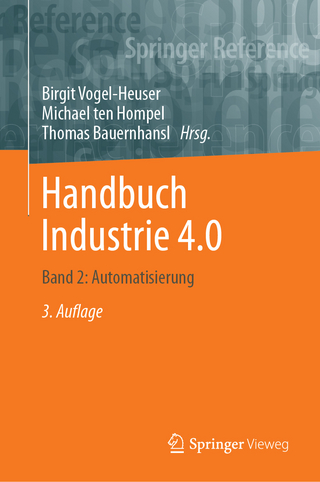
IUTAM Symposium on Analytical and Computational Fracture Mechanics of Non-Homogeneous Materials
Springer (Verlag)
978-90-481-5977-2 (ISBN)
Features and ellipticity analysis of a discrete constitutive equation.- Finite fracture mechanics — Application to the onset of a crack at a bimaterial corner I.- Elastic-plastic stress singularity near a bonded interface.- Viscosity-dominated regime of a fluid-driven fracture in an elastic medium.- Modelling failure mechanisms in laminated composites.- The influence of fiber on the structural response of reinforced concrete beams.- Materials with novel architectonics: assemblies of interlocked elements.- Asymptotics of elastic field near the tip of interface crack under nonclassical transmission conditions.- Scaling in multiple fracture and size effect.- Mechanics of fractal materials.- Fractal aspects of fracture simulation.- Filling of a circular crack with two non-miscible fluids.- Effect of inhomogeneous rock properties on the stability of wellbores.- The interplay of material and geometric instabilities in large deformations of viscous rock.- A displacement rate dependent softening model applied to the unstable propagation of shear crack in soft rock.- Fractures and defects in Cosserat continua modelling layered materials.- Modeling thin inclusions in poroelastic medium by line discontinuities.- Cleavage fracture in “heterogeneous” steel microstructures.- Modelling delayed hydride cracking in zirconium alloys.- Multiscale modeling of crack growth in polycrystals.- The viscoelastic fracture and indentation of sea ice.- An enriched finite element method for dynamic crack propagation.- Modeling of early-age fracture of shotcrete: application to tunneling.- Modelling of progressive interface failure under monotonic and cyclic loading.- Crack kinking from an initially closed interface crack in the presence of friction.- Elasto-plastic interface laws fornon-homogeneous materials: formulation, sensitivity analysis and parameter identification.- Analytical and discrete modeling of transformation toughening.- The influence of boundary conditions on the non-local response of a randomly heterogeneous medium.- Dynamic crack growth along interfaces.- A thermodynamic plasticity formulation with local and non-local internal variables.- Multi-scale energy release rate in dynamic crack growth of strain-softening materials.- Analysis of cohesive cracks under quasi-static and dynamic loading.- Material forces in computational fracture mechanics.- Shear localisation in thick-walled cylinders under internal pressure based on gradient elastoplasticity.- Damage and fracture study of non-homogeneous materials by image correlation computations.- Fibre failure due to thermal residual stresses in model polymer based composites.- A new method to obtain crack surface areas from electromagnetic radiation emitted in fracture: a string of pulses.- Determination of cohesive laws for materials exhibiting large scale damage zones.- A bio-chemo-mechanics approach to bone resorption and fracture.- Numerical study of mixed-mode fracture in concrete.- Thermodynamics of a multi component crack model.- Failure assessment of anchor bolts by means of nonlinear finite element analysis.- An interface model for fibre reinforced concrete.- Gradual degradation of initially porous polycrystalline ceramics subjected to quasistatic tension.- 3D studies of ductile failure in particulate reinforced metals.- Modeling deformation and damage in particle-reinforced composites: the effect of superposed hydrostatic pressure.- Understanding failure of heterogeneous materials from the analysis of discrete disordered systems.- Photonic band gaps for fields in continuous and lattice structures.- Effects of shear and rotation on the mechanical behaviour of interphase.- Modelling of R-curves from measured bridging laws.- Interfacial crack depinning.- Analysis of 3D crack propagation in random lattice structures with particle overlay.- A novel technique for the generation of failure criteria for jointed rock.- Nonlinear wave propagation in porous materials.- An improved lattice model for fracture and size effect of concrete structures.- Appendix: The Scientific Programme.
| Erscheint lt. Verlag | 18.12.2010 |
|---|---|
| Reihe/Serie | Solid Mechanics and Its Applications ; 97 |
| Zusatzinfo | X, 518 p. |
| Verlagsort | Dordrecht |
| Sprache | englisch |
| Maße | 155 x 235 mm |
| Themenwelt | Informatik ► Weitere Themen ► CAD-Programme |
| Mathematik / Informatik ► Mathematik ► Angewandte Mathematik | |
| Naturwissenschaften ► Physik / Astronomie ► Mechanik | |
| Technik ► Maschinenbau | |
| ISBN-10 | 90-481-5977-6 / 9048159776 |
| ISBN-13 | 978-90-481-5977-2 / 9789048159772 |
| Zustand | Neuware |
| Informationen gemäß Produktsicherheitsverordnung (GPSR) | |
| Haben Sie eine Frage zum Produkt? |
aus dem Bereich


